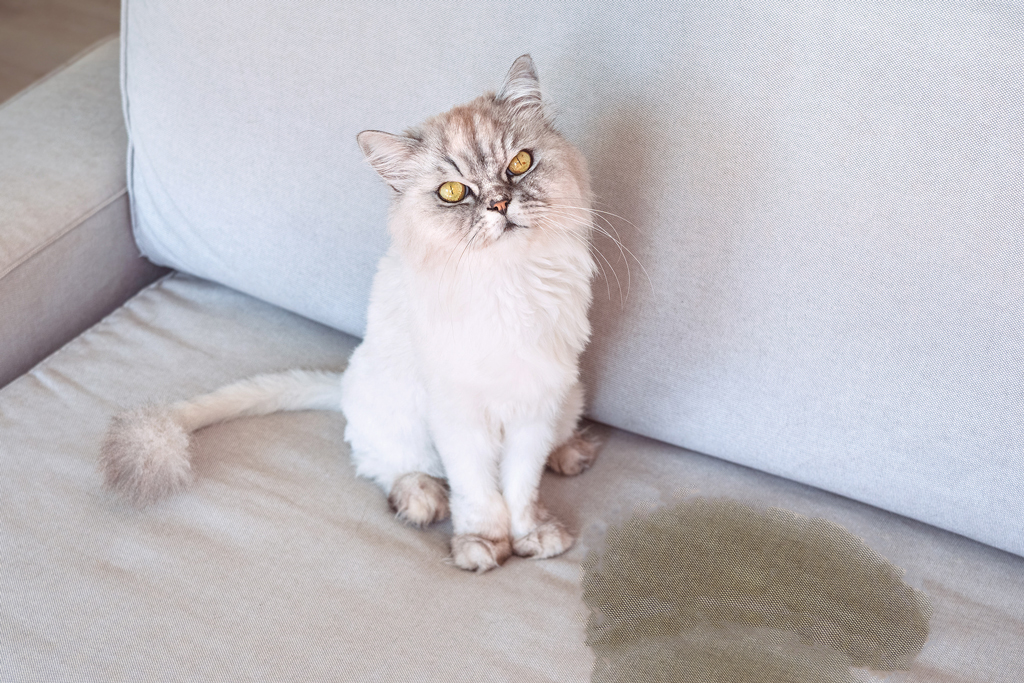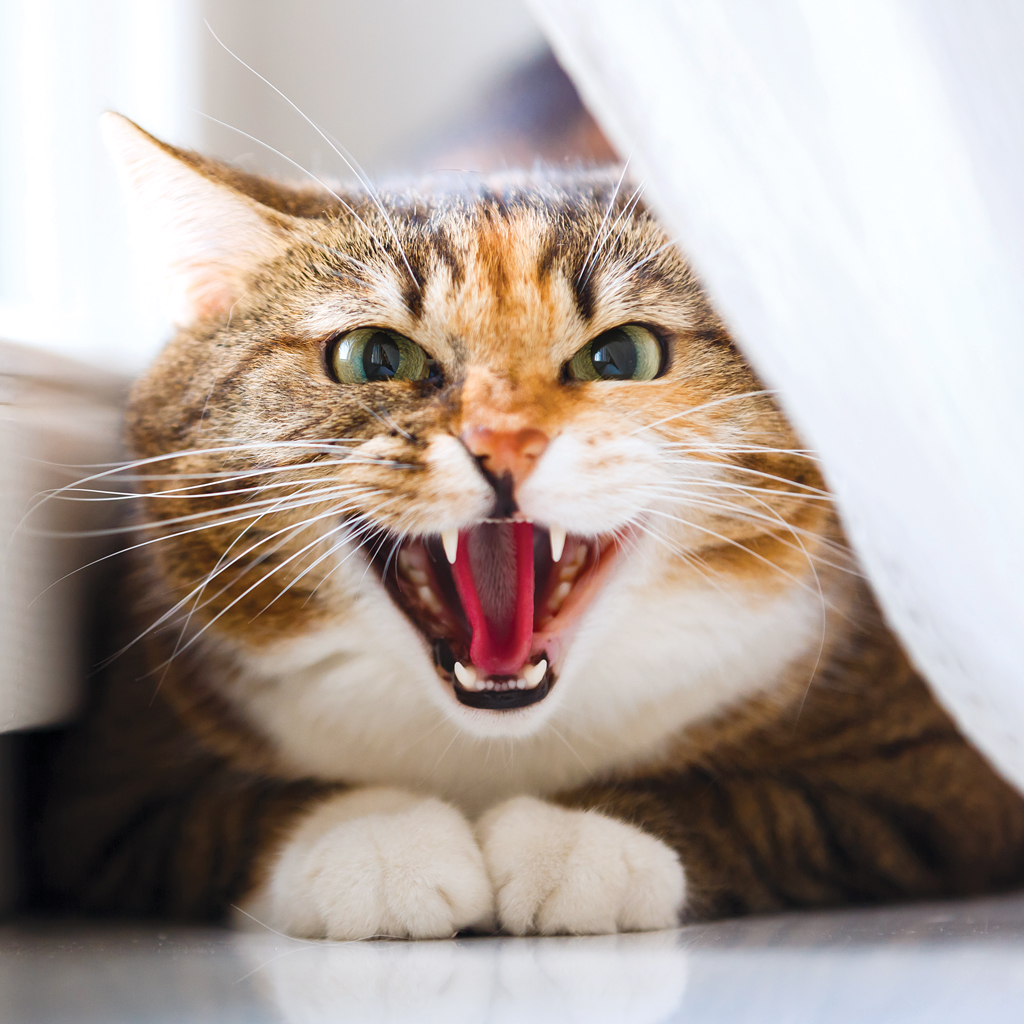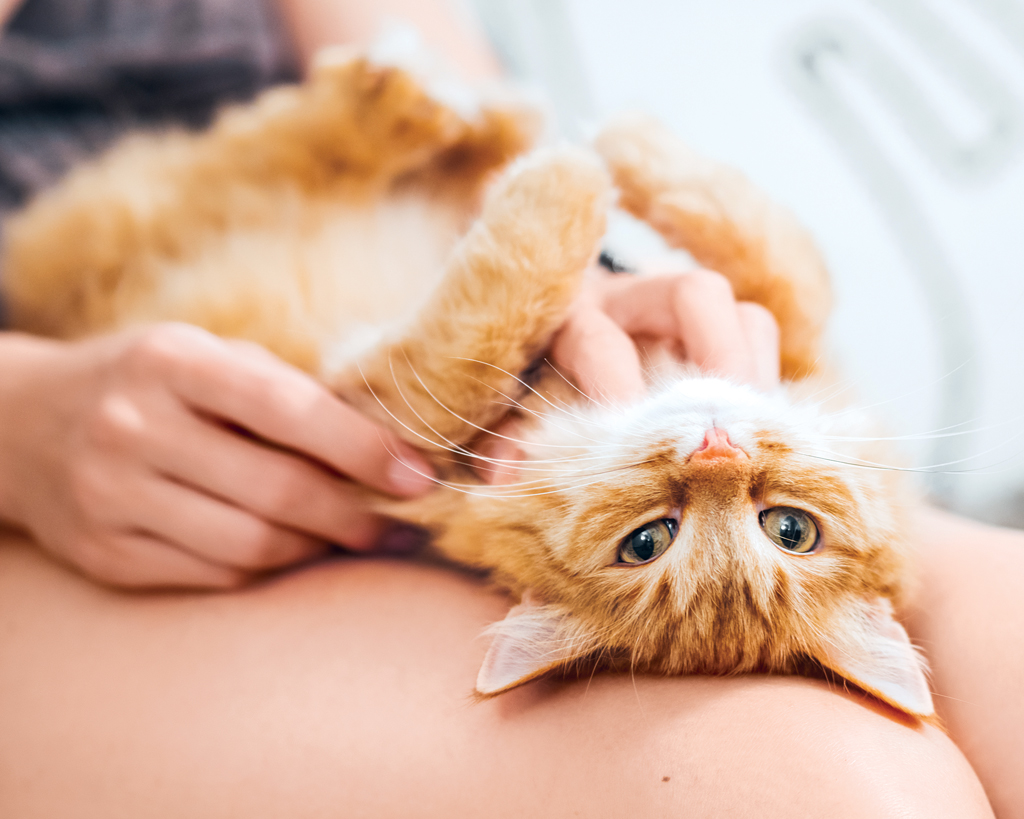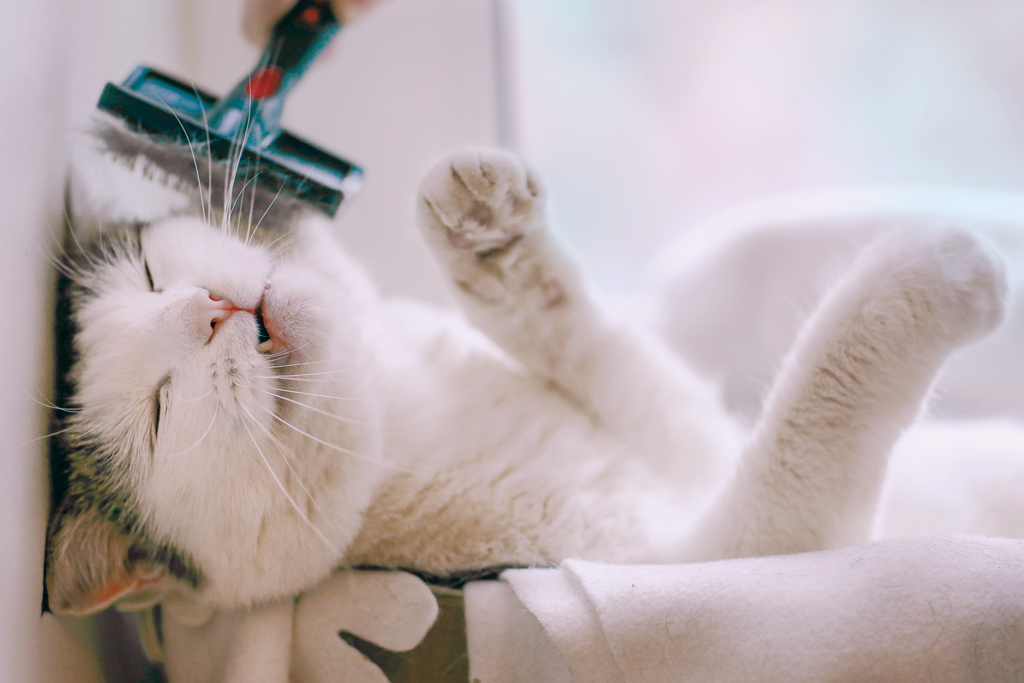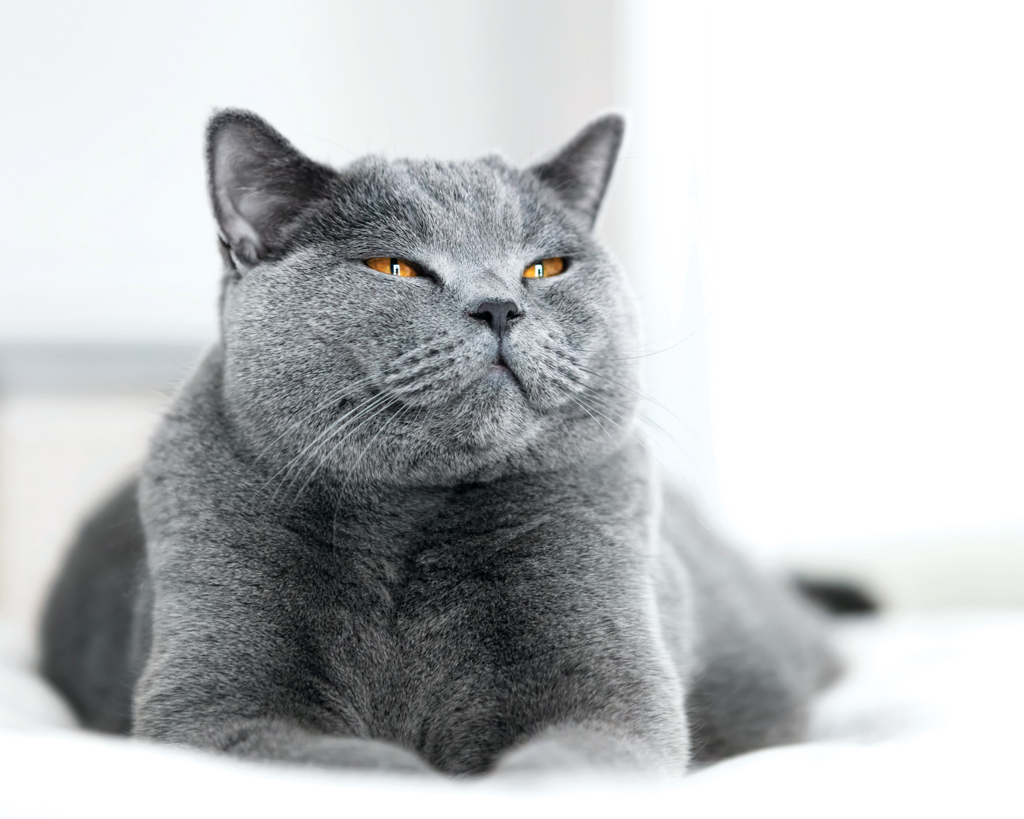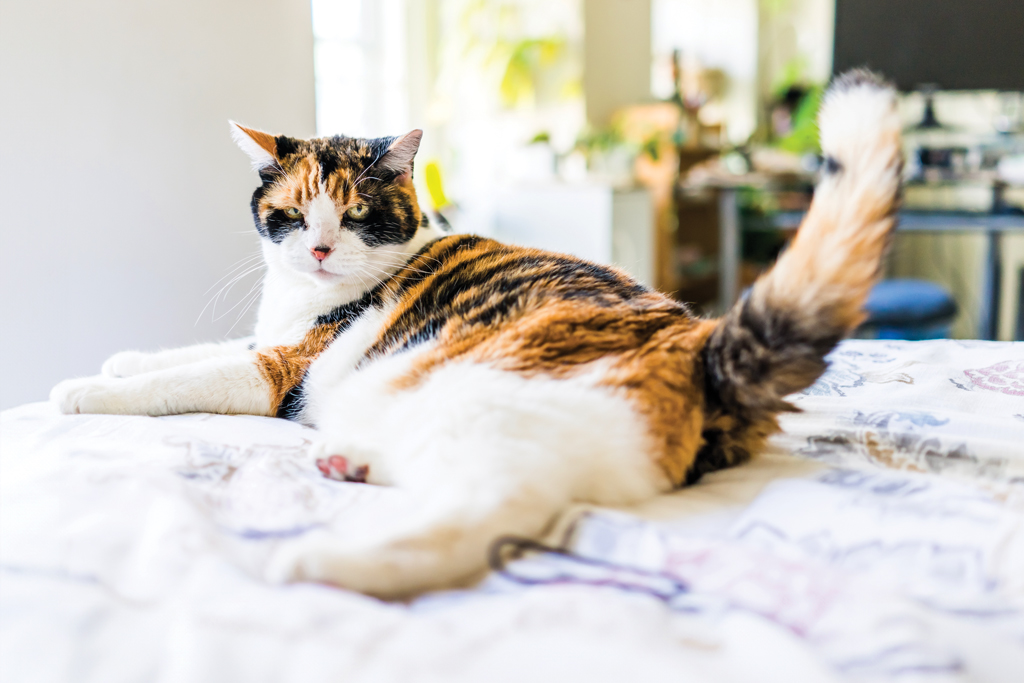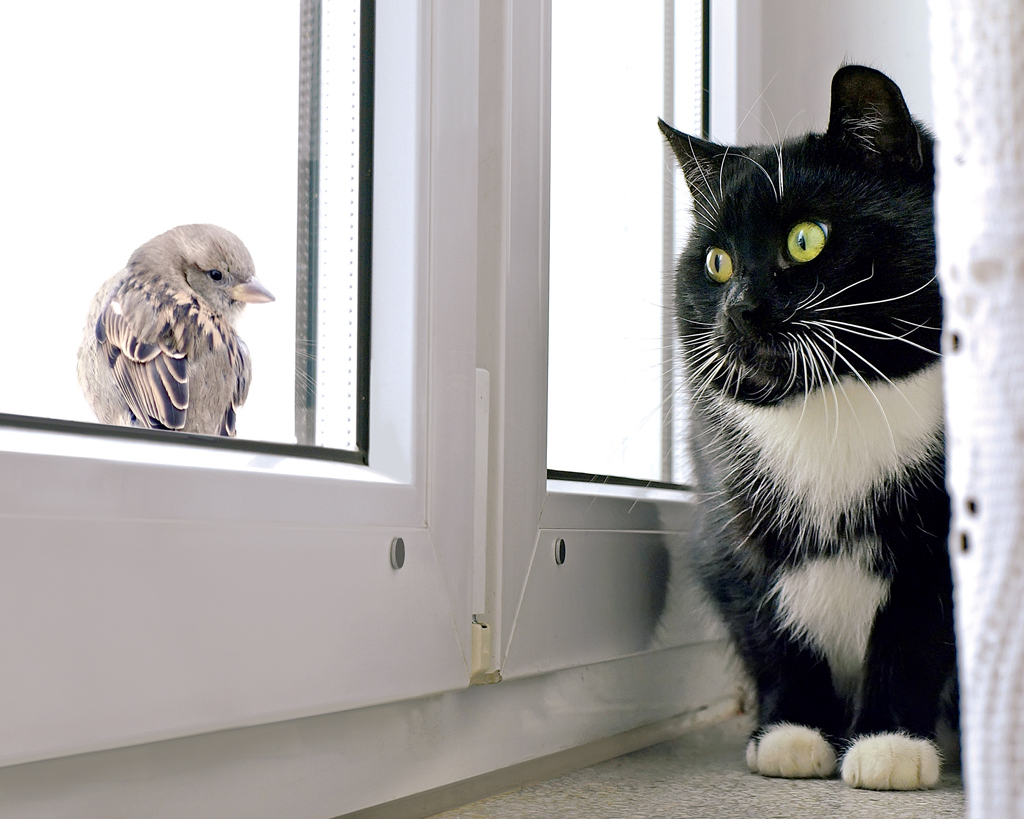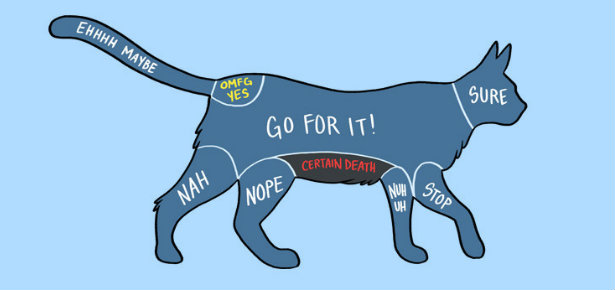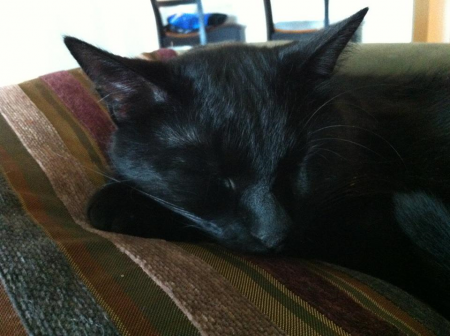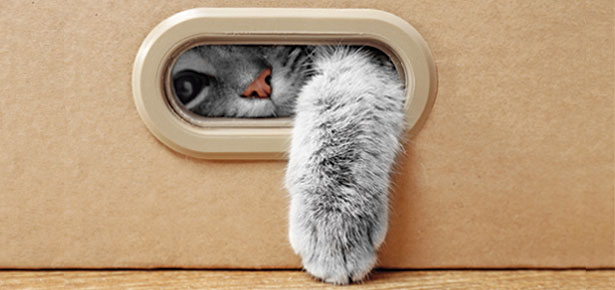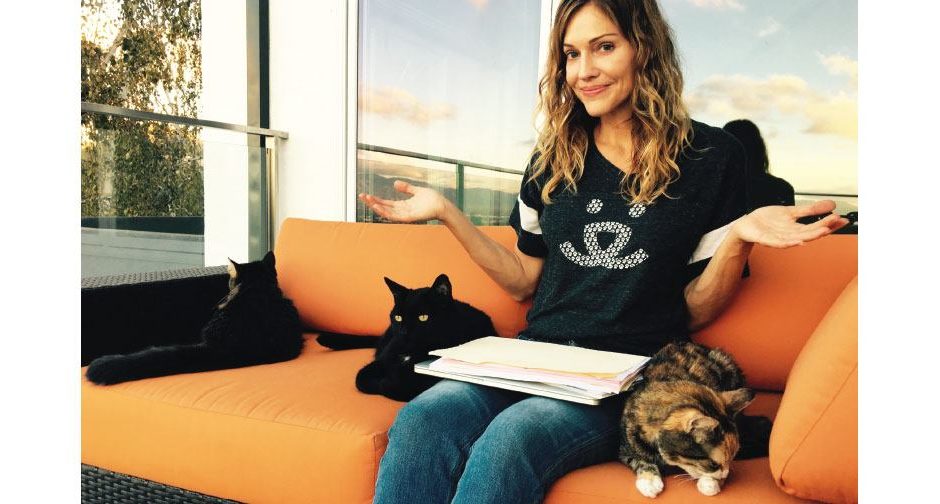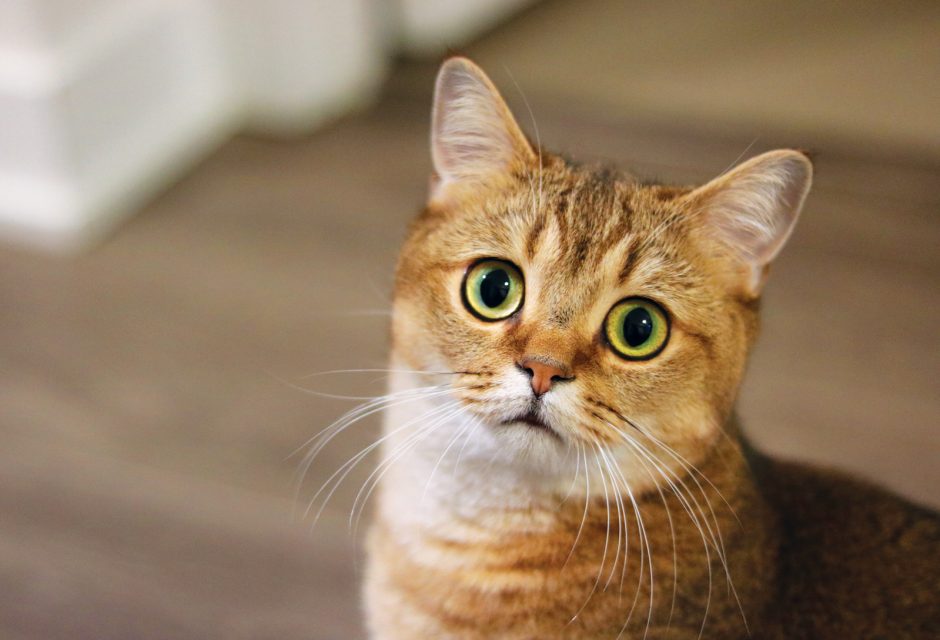
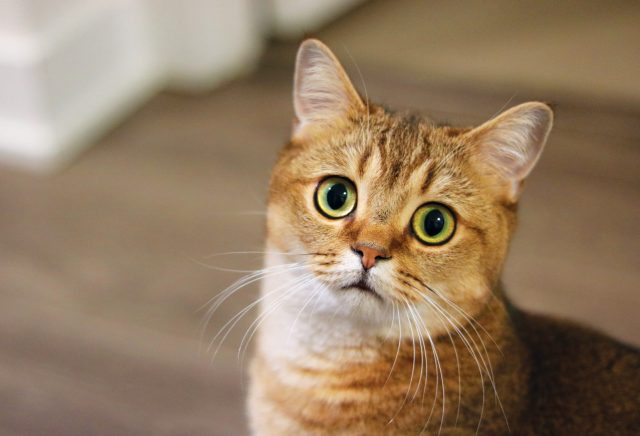
Your Cat is Trying to Tell You Something. You Just Don’t Understand.
A new study suggests that people frequently misread their cat’s signals.
Have you ever been petting a cat when suddenly, lightning fast, they turn around and bite your hand? Experiences like this are more common than not. Even though humans have lived with cats for thousands of years, many of us still struggle to decipher their signals—particularly ones indicating discomfort.
A new study by French researchers, published in Applied Animal Behaviour Science in January 2024, looked at our ability to understand cats’ vocalizations and visual cues. What they found was that people are especially bad at recognizing unhappy cat behaviours. Participants in the study achieved 90 percent accuracy when identifying contentment in cats, but that number dropped to just 72 percent when it came to discontentment.
According to LeeAnna Buis, a cat behaviour consultant with Feline Behavior Solutions, cats are notoriously misunderstood. “You have to put your ‘cat goggles’ on instead of your ‘people goggles’ and look at them through their eyes, not through yours,” advises Buis. Most of the Seattle resident’s working hours are devoted to dealing with two specific issues: house soiling and cat relationships.
“The number one thing that you have to keep in mind…is that cats do what they do for a reason,” she says. “Usually when there are things that we don’t like, that’s a cat trying to meet an instinctual need or having an instinctual reaction to something.”
20 Frequently Misread Cat Behaviours
“We bred dogs to do specific things and to live with us and to respond to our cues,” says Buis. “We didn’t do any of that with cats.” She adds, “Cats are acting the way that they would in the wild. They’re just a lot more complex than dogs are to read.” That complexity has led to these 20 feline behaviours—both positive and negative ones—often being misunderstood.
- HOUSE SOILING
The behaviour that causes the most stress, grief, and confusion is house soiling. A cat who urinates or defecates outside the litter box is not being vengeful or spiteful but instead is trying to communicate that something is wrong—“and that something is either medical, emotional, or an issue with the litter box setup,” says Buis. A medical issue doesn’t necessarily mean a urinary problem. Any physical pain, from an ear infection to arthritis to a broken bone—all of which she has seen—could be causing the behaviour. An emotional cause might be a stressful change in the household, such as a new baby or an increased travel schedule. According to the cat’s logic, “I’m going to pee on all your stuff so that you know I love you,” says Buis. “It’s kind of a backhanded compliment. But it usually has to do with a self-soothing stress behaviour, where they want their scent mingled with your scent.” Or the litter box itself could be the problem, if it’s not kept clean enough or if it’s located in a dark or noisy location. “The cat is going to pee or poop where they feel the most safe and secure.”Photo Creative Cat Studio/Bigstock
- ACTING AGGRESSIVE TOWARD A NEW PET
What a human views as aggression or bullying can actually be the cat’s way of guarding their territory, protecting their resources, or showing fear of the new pet. The aggressive behaviour frequently occurs only after some subtle body language that the owner has failed to register, such as the cat’s ears “turning and airplaning a little bit,” says Buis. “Or you may notice the skin start to twitch a little. They’re staring at each other, they’re not taking their eyes off each other, and then that skin starts to twitch… Or the tail might go from a leisurely swish to a really agitated swish.” In short, there are signs of your cat’s discomfort prior to any overt aggression, like fighting. Pay attention and you can address the cause. For example, adding more resources so your cats can “timeshare” or improving their bond by creating a group scent using a shared brush.Photo castenoid/Bigstock
- KNOCKING OVER ITEMS
In popular culture, cats have earned a bit of a reputation as jerks for spitefully flicking items off tables and counters. In truth, “cats investigate things with their paws and mouth,” says Molly Kelsey, aka The Cat Counsellor, a feline behaviour consultant in Auckland, New Zealand. A cat might bat at something to see if it moves or does anything interesting. “Also, nine times out of 10, someone will respond to them and give them attention, so they figure out very quickly that if they move something from a height, a human will come over and talk to them or pick them up.” - LICKING THE LIPS
A cat that licks its lips a lot might be salivating and anticipating food, as most people assume, but the action could also have a physiological cause such as sore gums, says Kelsey. “Behaviourally, it can be a sign of elevated stress or anxiety.” - EXPOSING THE BELLY
“When a cat lies on its back and exposes its belly, many people interpret this as an invitation for a belly rub, similar to dogs. However, in cats, this posture can signify trust or a defensive position rather than an explicit desire for stomach pets, says Sabrina Kong, a veterinarian in Tracy, CA, and staff veterinary writer at We Love Doodles. “Attempting to pet a cat’s belly in this situation can lead to a swift negative reaction, as the belly is vulnerable.”Photo aksenovko/Bigstoc
- BUNTING
“Another commonly misunderstood behaviour is headbutting or bunting, where a cat pushes its head against a person,” says Kong. “Some might misread this as merely seeking attention for food or play, but it’s actually a significant sign of affection and trust, marking the person with their scent from glands located around their face.” - FACING AWAY FROM YOU
“People think that when a cat sits with their back to you, it means they do not like you,” says Claudette Nita, a cat trainer at Happy Kitty in Toronto, ON. “In fact, it’s them telling you they trust you completely.” What may initially seem like aloofness is actually a sign that the cat feels safe and contented enough not to be on alert for danger, the way they would with a potential predator nearby. - PURRING
“Purring is a behaviour that is often considered to be a sign of a happy cat—and for the most part, it is,” says Lucy Hoile, a feline behaviourist in England and author of The Book Your Cat Wishes You Would Read. “But cats can also purr when they are injured, as it is thought to aid healing or help them to self-soothe. It can also happen when they want something from their owner, such as when they are expecting food or want your attention.”Photo Yuliya Lapkovskaya/Bigstock
- HOLDING THE TAIL HIGH
“Approaching a person with their tail up is a very positive behaviour that is often missed or considered normal behaviour,” says Hoile. “It is a really good sign that the cat likes you and is looking to say hi.” - MEOWING
Cats in the wild rarely meow to each other past kittenhood, communicating instead through scent, body language, facial expressions, grooming, and biting. “Meowing tends to only be directed toward people, rather than between cats, so this is a very positive behaviour,” says Hoile. - WAGGING THE TAIL
“While dogs wag their tails to show excitement or happiness, cats’ tail movements can indicate agitation, fear, or, on rare occasions, playfulness,” says Mollie Newton, a veterinarian in Columbus, OH, and founder of PetMeTwice. “It is best not to have contact with cats if their tails are wagging, especially if it involves hissing.” - HISSING OR GROWLING
“When cats feel threatened or scared, they may hiss or growl as a warning signal,” says Newton. “Some humans misinterpret these vocalizations as signs of anger or aggression toward them.” - ACTING LETHARGIC
Because cats are unfairly characterized as lazy—especially compared to dogs—a cat’s lack of energy can easily be misunderstood or overlooked completely. “Lethargy can be a signal of discomfort,” says Newton, particularly “if it is associated with loss of appetite.” In that case, a vet visit is necessary to rule out serious illness. - BLINKING SLOWLY
“Owners may interpret slow blinking as a sign of sleepiness or disinterest,” says Georgina Ushi, a veterinarian based in Tampa, FL. Really, the opposite is true. “Slow blinking, or ‘cat kisses,’ is a gesture of trust and affection in cats. It signifies relaxation and a sense of security.”Photo PHOTOCREO Micha Bednarek/Bigstock
- SHARING DEAD PREY
“One positive cat behaviour I’ve noticed that humans often misinterpret is when a cat brings dead prey to their owner,” says Michael Thompson, a veterinarian and animal behaviourist in Austin, TX, and founder of Pets Food Safety. “While this might seem alarming or even gross, it’s actually a cat’s way of showing affection and sharing their ‘hunt’ with you, as they might do in the wild with their family.” - FLICKING THE TAIL
When a cat flicks its tail, “some people may think the cat is irritated, but sometimes they’re simply concentrating on something intensely,” says Thompson.Photo Kristina Blokhin/Bigstock
- SCRATCHING FURNITURE
Far too often, scratching is misinterpreted as deliberately malicious destructive behaviour. “While this can be a sign of stress, it is often a normal behaviour related to territory marking, stretching, or nail maintenance,” says Thompson. - KNEADING
“Kneading is sometimes misinterpreted as a mere comfort-seeking behaviour, reminiscent of a kitten’s actions to stimulate milk flow,” says Chicago veterinarian Kathryn Dench, chief veterinary advisor for Paw Origins. “While this is partially true, kneading also serves as a way for cats to mark their territory through scent glands in their paws, indicating a deeper, instinctual behaviour tied to their sense of security and ownership.” - CHATTERING AT BIRDS
“The peculiar chattering noise cats make when they spot birds or squirrels is often misunderstood as excitement,” says Dench. “While it does indicate a heightened state of emotion, experts believe it may also be an instinctual mimicry of prey calls or a frustration response at not being able to reach the prey.”Photo Andrzej Puchta/Bigstock
- HIDING
“When cats hide more than usual, it’s often mistaken for mere preference for solitude,” says Dench. “While cats do enjoy their alone time, excessive hiding can indicate stress, fear, or illness.”
How to Better Understand Your Cat
“Humans domesticated dogs, and cats domesticated us, so cats’ brains haven’t really changed,” says Molly Kelsey. “Your cat is called a domestic cat, but they still have all the programming that a wild animal does.” She tells her clients that cats speak an entirely different language, one involving scent, vocalizations, and subtle body language. Though we can’t do much about scent, if we pay close attention to a cat’s sounds and movements, we start to understand the cat better. She also advises all cat owners educate themselves, using resources such as the guides to feline body language that are readily available online. “Education goes a really long way.”
Kathryn Dench encourages her clients to engage in daily play with their cats. “This not only strengthens the bond between the owner and their cat but also allows them to observe the cat’s behaviour and preferences closely. As well as helping you get familiar with your cat’s individual personality, this quality time together helps you notice any behavioural changes quickly.”
Michael Thompson notes that far too often, we view cats through an anthropomorphic lens or expect them to be similar to dogs. “Since cats are less expressive than dogs and have evolved as solitary hunters, their communication is subtler, demanding more attentiveness to understand,” he says. “To get better at understanding what our cats are trying to communicate, we should focus on spending quality time observing our pets in different scenarios. It’s crucial to learn about cat-specific behaviours and their meanings from reputable sources, such as veterinary literature or through consultations with animal behaviourists.”
LeeAnna Buis knows from personal experience the value of a session with an expert. Though she had been around cats her entire life, it wasn’t until she adopted a difficult cat when she was in her 40s that she booked a session with a behaviour consultant. “By the end of that session, I was so dumbfounded by how much I didn’t know, how much I had gotten wrong, how much was my fault,” she says. “It’s our issues, not the cat’s issues, that are causing problems.”
This article originally appeared in the award-winning Modern Cat magazine. Subscribe today!
Join the newsletter and never miss out on cat content again!
"*" indicates required fields
By clicking the arrow, you agree to our web Terms of Use and Privacy & Cookie Policy. Easy unsubscribe links are provided in every email.





